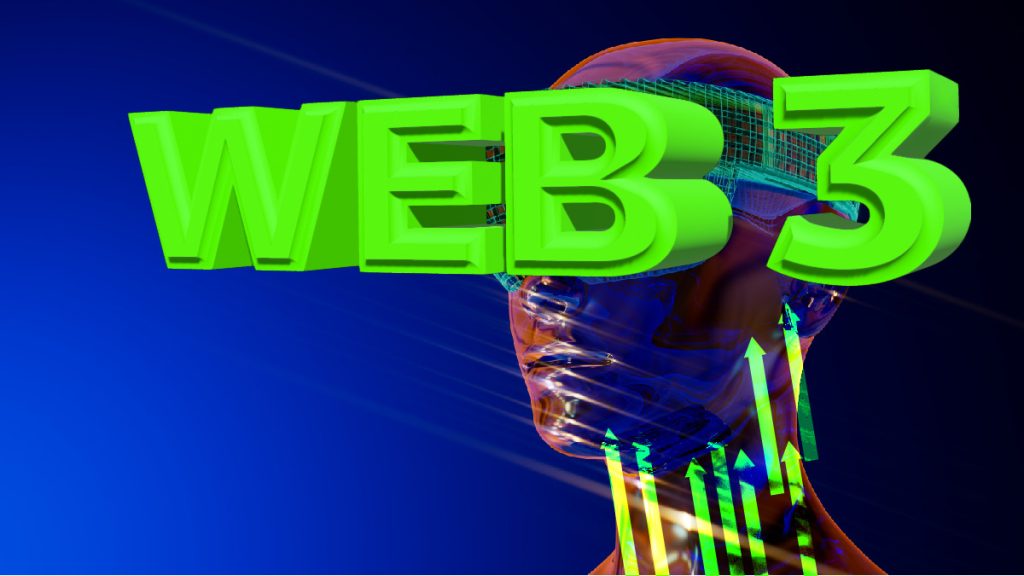
You need to keep up. Web3 is not something to anticipate. It is something you need to adapt to and live with. Web3 is the next step for various sectors, and the telecom sector is no different. Telecom and Web3 are codependent. There is a need for a balance between them. This balance is crucial for both concepts to achieve their full potential. Web3 can help telcos optimize their operations, increasing their margins of profit. In contrast telcos are essential for the full deployment of Web3.
Telcos Becoming Web3 Enablers
The demand for Internet bandwidth is rising, affecting the telecoms sector. The pandemic and current consumer technology patterns have increased bandwidth requirements by doubling. This development continues as blockchain, metaverse, and VR/AR applications are widely used. The existing infrastructure, which is still governed by protocols from decades ago, must catch up, which is a problem.
However, brand-new blockchain-based options like Syntropy can assist in resolving this issue. Telcos can improve global Internet access. Because of this, telecommunications firms, venture financiers, investors, and Web3 fans are eager to sign up. It’s a huge chance to change people’s lives. Internet users can now contribute to creating a Web3-friendly future thanks to collaborations with telecommunications firms.
How Web3 Will Improve Things for the Customer
Web3, the open web, and blockchain technology are topics of much debate. This new internet allows users and content creators to regain control over data and material. It will improve privacy, boost online loyalty and confidence, and offer a more immersive experience. However, how does that apply to a telco and its clientele?
Web3 Will Improve Data Privacy
The industry’s tendency toward giving customers back control over their data indicates a general transformation in how brands conduct business. Since the pandemic, telcos’ top objectives have been the customer experience, and consumer privacy is a critical component of that.
Additionally, Web3 platforms offer much greater security against hacks and business data sniping for email and instant messaging. Despite using end-to-end encryption, which stops potential third parties from viewing message content, current chat messaging platforms store data with a third party (such as the WhatsApp servers). Web3 is secure on both ends and doesn’t require a third party to store data or apps because it is decentralized.
Web3 Will Revolutionize Customer Experience
The metaverse is a topic of much discussion, but many people see it as only one component of Web 3. The ideas and technologies of Web3 will likely be incorporated into Web 2.0 applications, resulting in a fusion of the metaverse and Web3 concepts.
A brand is prime for being able to provide immersive CX if it can seamlessly combine traditional channel experiences (web, email, mobile) with natural experiences (physical in-store, call center, voice-to-text, chat, haptic) and vast experiences (augmented, virtual, mixed reality) throughout the customer journey.
Most consumers will still have to wait years to experience the Web3 metaverse. Still, the essential technologies are already in use and will gain more acceptance and adoption over the next few years.
Reinventing Customer Loyalty
Telcos can reassure customers that their data is secure because Web3 offers a transparent process for handling consumer data through blockchain technology and because the customer retains control.
Increased digital trust is a direct consequence of better data privacy and security. The loyalty that trust fosters is worth the communication necessary for the company to build trust.
Telcos succeed if customers browse websites, consent to data collection, or even submit general data and information. Due to Web3’s security procedures and standards, consumers will be loyal to trusted telcos and only engage with trustworthy brands.
More Digital Trust
Trusting someone or something requires making an educated guess about how likely they will behave. It’s something that makes the individual who is trusting vulnerable. Trust is a sense of security and assurance in an organization’s activities. Customers believe companies that are trustworthy, reliable, offer value and prioritize customers.
Web 2.0 allowed for the emergence of software assaults and cyberbullying while we were submerged in a sea of social media. By 2021, 41% of Americans had encountered online abuse, such as stalking and derogatory language. Every 39 seconds, a hacker assault occurs, affecting one in three Americans.
In Web3, users will have more control over their data, which is the goal and promise. Thanks to user-friendly interfaces, users should be able to comprehend the information they share with web service providers easily. Many refer to this as decentralized identity, while others refer to it as self-sovereign identity. However, this will generally serve as the basis for Web3 platforms.
Wrap Up
Web3 promises many benefits for the customer. Yet the financial aspect still needs to be fixed. Sources rave about the digital elements of Web3, how it will protect data, and change the privacy game. But what about pricing? Data on such matters remain limited. Will inflation prices follow you to the virtual realms of Web3? Or will you, as a customer, end up paying for virtual luxuries that will be too much on your bill?
Inside Telecom provides you with an extensive list of content covering all aspects of the tech industry. Keep an eye on our Web3 section to stay informed and up-to-date with our daily articles.